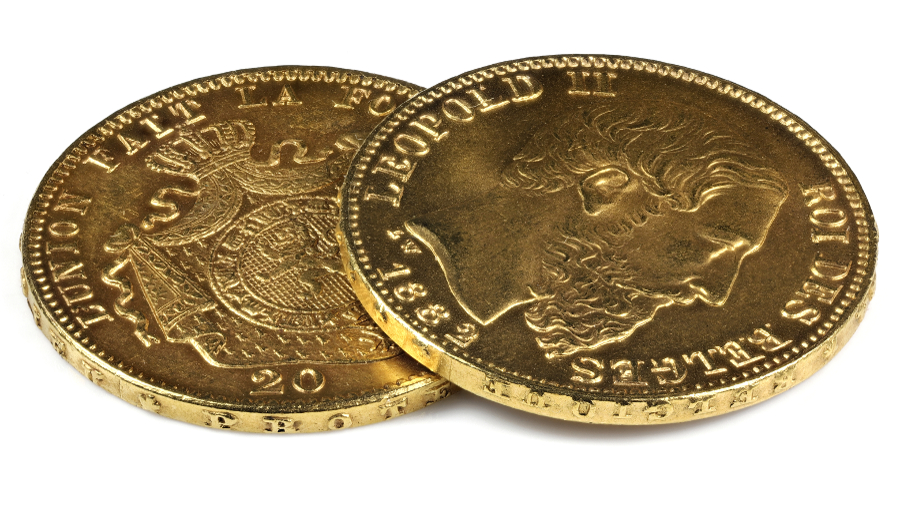The Latin Monetary Union (LMU) was a 19th century attempt at creating a European monetary union. It took advantage of the fact that more and more European countries were adopting the gold standard and seeking to harmonize their currencies. With France spearheading the effort along with Belgium, Italy, and Switzerland, the four countries came to an agreement to mint their gold and silver coins according to the same standards of fineness. Thus anyone traveling or doing business in those four countries could use, for instance, a 20 French franc gold coin in Switzerland and be assured that it would be accepted as payment since it was of the same size and gold content as the 20 Swiss franc gold coin.
While the French and Swiss 20 franc coins remain highly popular bullion and investment coins today, the Italian, Belgian, and similar coins don’t have nearly as high a profile. And those aren’t the only coins minted according to LMU standards either. The Spanish 20 peseta, Greek 20 drachma, and Venezuelan 20 bolivar coins are other examples of gold coins minted to the LMU standards of size, weight, and fineness. Other countries that eventually followed LMU standards included Serbia, Bulgaria, Romania, and Colombia.
All of those 20 franc-sized coins were exchangeable at a 1:1 ratio with their French, Belgian, Swiss, and Italian counterparts. Add in coins such as the Austro-Hungarian 8 florin and Russian 7.5 ruble coins that were minted to the same standards as the 20 franc LMU gold coins and you have a multiplicity of coins that all contain the same amount of gold. The LMU countries also minted 10 franc gold coins, with other countries following suit and minting similar sized coins.
Because so many of these coins were produced in all of these different countries, many remain available today to collectors and investors. While the French and Swiss 20 franc coins get most of the attention because they were the most widely produced, don’t ignore the coins from other countries, particularly if you can find them at attractive prices. Premiums may be slightly higher on the coins from Belgium, Italy, and other LMU and non-LMU countries due to their lower mintage numbers and lesser availability.
Like most circulating gold coinage, the LMU gold coins are not eligible for investment through a gold IRA due to their 90% gold content. But if you’re looking for a good source of gold that is also an interesting piece of history, you can’t go wrong by investing in LMU gold coins.
Coin Specifications
Purity
90% gold
Weight
- 20 Franc: 6.45 g
- 10 Franc: 3.22 g
Gold Content
- 20 Franc: 0.1867 troy oz.
- 10 Franc: 0.0934 troy oz.
Diameter
- 20 Franc: 21 mm
- 10 Franc: 19 mm
Thickness
- 20 Franc: 1.2 mm
- 10 Franc: 0.8-1.0 mm
This article was originally posted on Red Tea News.





